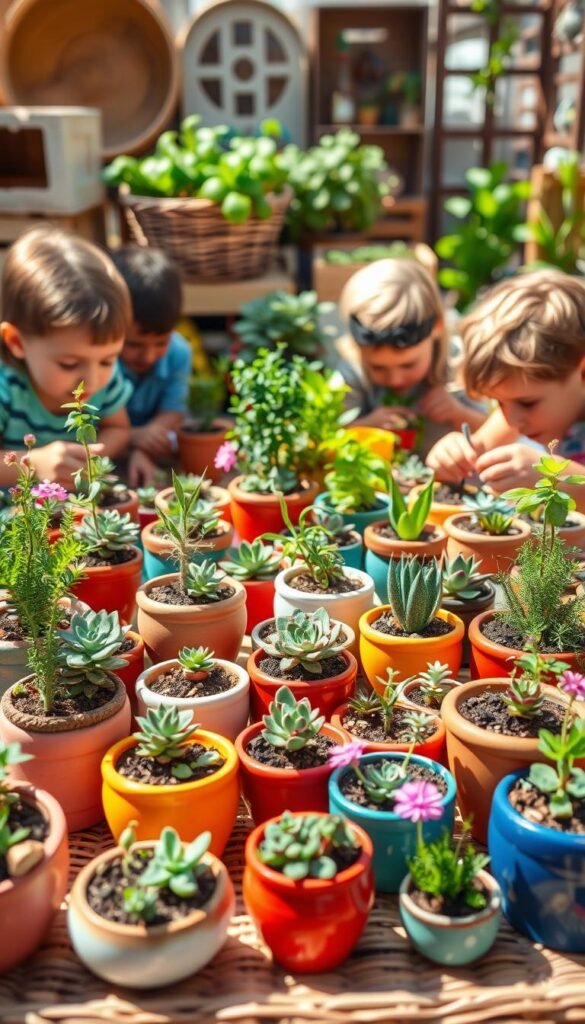Discover how shallow containers become vibrant worlds where young minds connect with nature. These compact plant arrangements transform small spaces into living classrooms, blending hands-on learning with artistic expression.
Perfect for windowsills or tabletops, these miniature landscapes let children witness growth up close. Fast-sprouting seeds and colorful succulents deliver quick rewards, keeping enthusiasm high as young caretakers track daily changes.
From enchanted fairy realms to practical herb collections, each creation tells its own story. You’ll find simple techniques that turn ordinary containers into magical ecosystems, teaching responsibility through watering routines and sunlight observation.
No backyard? No problem. These space-smart gardening projects thrive in apartments and homes alike. Gather basic supplies from local stores, and watch curiosity bloom alongside leafy companions.
Getting Started with Your Easy Dish Garden Ideas DIY for Kids: Fun Projects to Spark Creativity
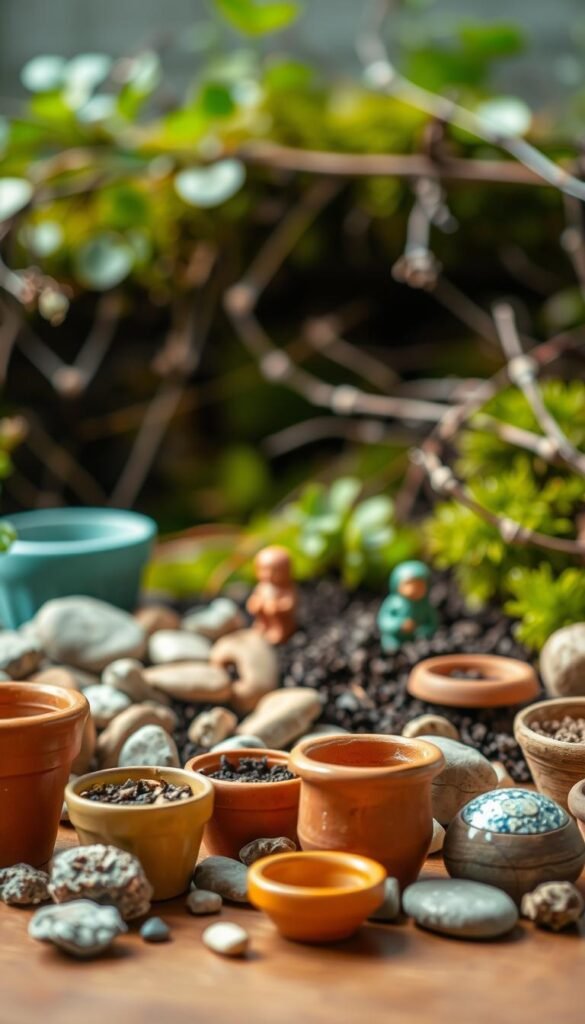
Transform ordinary containers into living storybooks where young growers shape tiny ecosystems. These compact gardens merge imagination with science, offering a hands-on way to explore nature’s cycles. Perfect for classrooms or cozy kitchens, they turn small space into vibrant learning labs.
Understanding the Concept of Dish Gardens
Think of these as 3D art projects with roots. They combine small plants like succulents or herbs with decorative stones and miniatures. Themes range from desert scenes to fairy villages, letting children craft narratives through their plant choices. A plants and gardening preschool theme works beautifully here, aligning with early education goals.
Gathering the Essential Materials and Supplies
Start with a shallow container—upcycle pie pans or plastic trays. Add drainage holes if needed. You’ll need:
- Potting mix for containers (avoids garden soil)
- Slow-growing plants like hens-and-chicks
- Decorative materials: pebbles, moss, twigs
Keep supplies kid-sized: small watering cans and plastic tools work best. Let young designers arrange elements freely—crooked paths and off-center trees add charm. The goal? Nurture pride in creation, not perfection.
Creative Dish Garden Design Ideas for Your Home and Garden
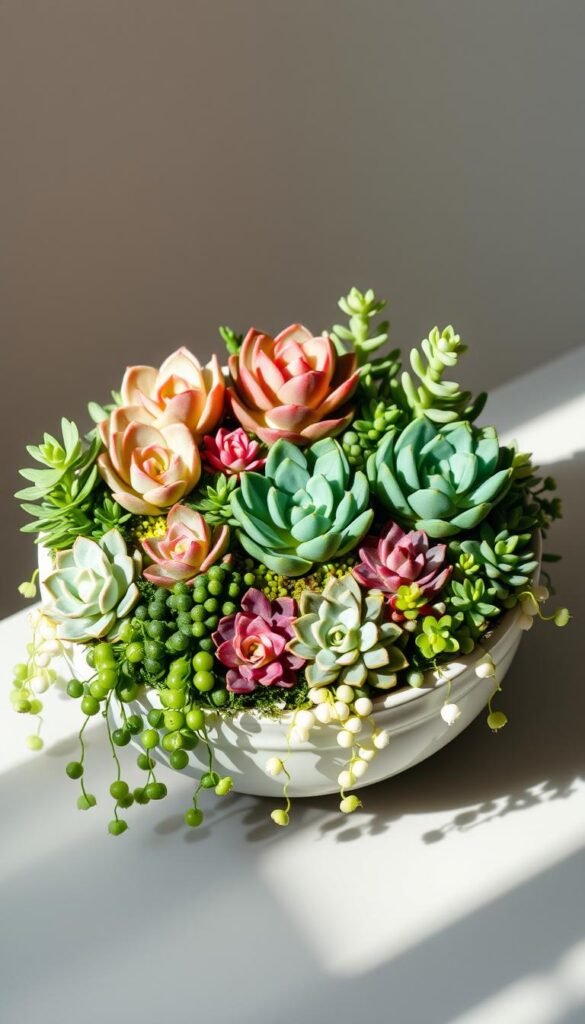
Turn everyday objects into living art by blending practical design with playful imagination. These miniature landscapes bring nature’s beauty to tabletops and shelves, merging functionality with visual storytelling. Whether crafting a kitchen herb station or a coastal succulent scene, your choices shape tiny worlds that grow alongside young creators.
Choosing Colorful Containers and Stylish Dish Elements
Let containers become personality showcases. Repurpose thrifted teacups for fairy-sized landscapes or use retro lunchboxes for retro charm. Painted terra cotta pots add bursts of colors, while woven baskets create earthy textures. Tip: Match vessel sizes to plant roots—shallow dishes work best for succulents.
Incorporating Herbs and Succulents
Mix practical greens with fantasy flora. Basil and mint release fresh scents while teaching responsibility through harvests. Pair them with rosette-shaped succulents that mimic coral reefs for underwater themes. These drought-tolerant plants thrive in small containers, making them perfect for STEAM gardening projects.
Create contrast by combining spiky aloe with velvety lamb’s ear leaves. Arrange taller herbs like chives behind trailing sedum varieties. This layering technique adds depth, turning your dish into a dynamic 3D canvas. Remember: Odd numbers of plants often look most natural.
Easy Dish Garden Ideas DIY for Kids: Fun Projects to Spark Creativity
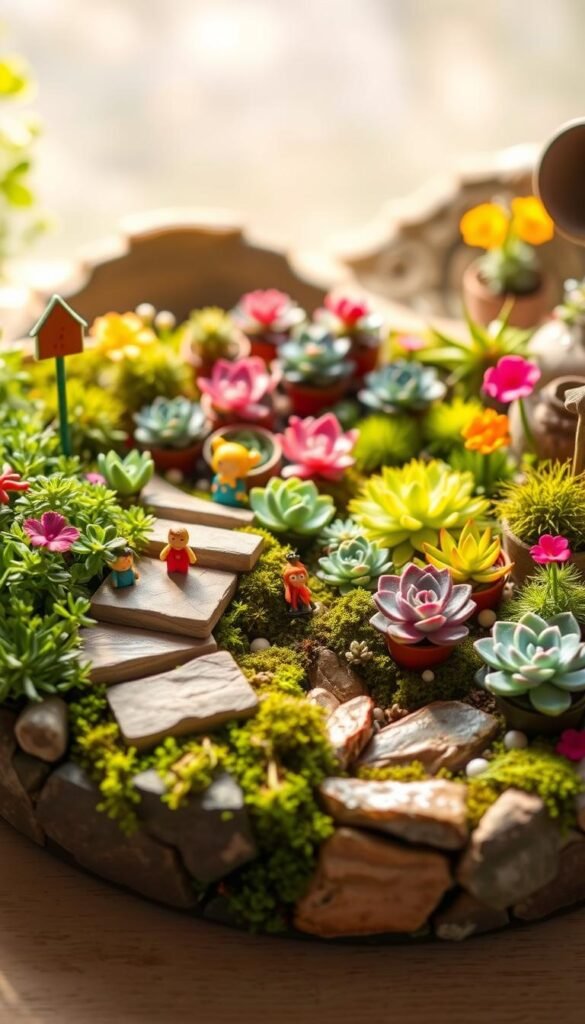
Small-scale gardening projects let young explorers practice care routines while observing plant life cycles. Start with a shallow plastic tray or ceramic bowl—anything 3-4 inches deep works. Ensure containers have drainage holes, or layer pebbles at the base to prevent soggy roots.
Step-by-Step Instructions for a Kid-Friendly Dish Garden
Guide children through these stages for success:
- Fill 1/3 of the container with gravel for drainage
- Add potting mix, leaving space for plant roots
- Let them arrange 2-3 small plants (try spider plants or thyme)
Use this table to match plants with care needs:
| Plant | Water Needs | Sunlight |
|---|---|---|
| Sedum | Low | 4-6 hours |
| Parsley | Medium | 3-4 hours |
| Moss | High | Shade |
Tips to Safely Involve Children in Gardening
Choose tools with rounded edges and demonstrate proper soil handling. Supervise when adding decorative stones or small figurines. Rotate containers weekly so all sides get sunlight—this becomes a science lesson about plant behavior.
Celebrate small victories like new leaves or sprouts. These projects build skills in measurement and observation while keeping tasks manageable. Mobile gardens adapt to any space, letting young growers take ownership of their green creations.
Exploring Container Gardening Projects for Creative Young Minds
Unlock new possibilities by reimagining what holds your plants. The right container does more than house roots—it shapes stories and solves space challenges. From balcony boxes to hanging towers, each vessel becomes a lesson in design and biology.
How Container Choices Enhance Your Garden’s Appeal
Material matters. Fabric grow bags let carrot roots breathe, while glazed ceramic pots keep herbs hydrated. Try sub-irrigated planters like Caja Planters—their water reservoirs teach kids about conservation through self-watering systems.
Vertical planters turn walls into living art. Stackable units work for strawberries or trailing flowers, maximizing vertical space. Pair these with vibrant blooms for instant visual impact.
- Window boxes: Ideal for basil or pansies
- Recycled buckets: Drill holes for tomatoes
- Hanging baskets: Perfect for cherry tomatoes
Deep containers support root vegetables, while shallow dishes host succulents. Let young growers test different shapes—oval planters vs. square pots—to see how layouts affect plant growth. This hands-on approach turns gardening projects into geometry lessons.
Portable fabric pots empower kids to chase sunlight. Move pepper plants from porch to patio as seasons shift. These flexible gardening solutions adapt to any home, proving even small garden spaces can yield big discoveries.
Integrating Arts and Crafts with Gardening Projects
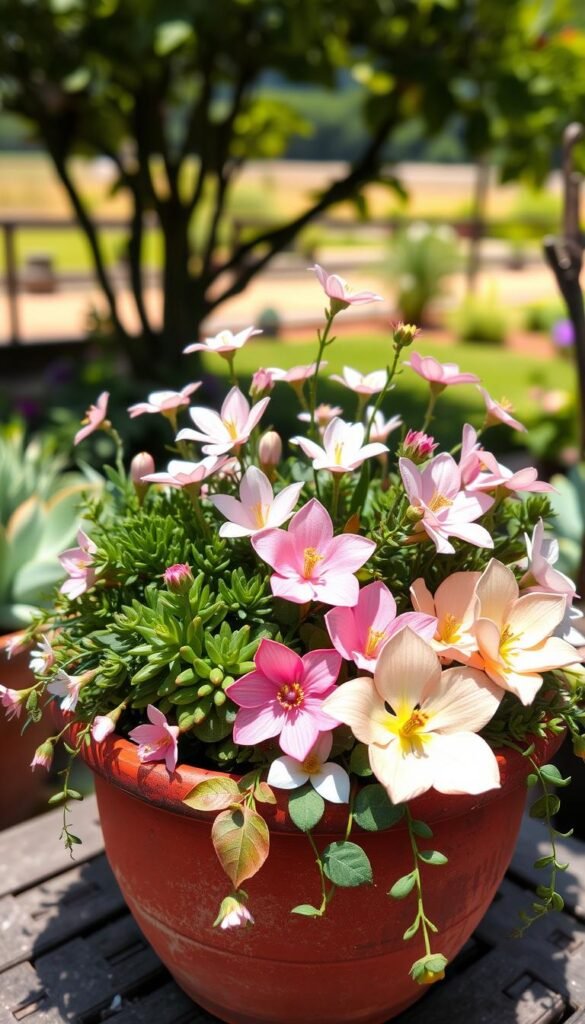
Merge nature’s palette with hands-on creativity through botanical crafts that turn garden treasures into lasting art. These activities bridge outdoor exploration with indoor expression, letting young creators preserve seasonal beauty in imaginative ways.
DIY Flower and Botanical Craft Ideas
Revolutionize pressed flower projects using microwave-safe parchment paper. Layer blooms between sheets, then heat for 30-second intervals. This method locks in vivid hues while teaching kids about plant cell structures through rapid dehydration.
Air-dry clay becomes a canvas for nature’s patterns. Press rosemary sprigs or pansy petals into rolled-out slabs to make textured trinket dishes. Let young artists paint dried imprints with metallic acrylics for added sparkle.
Using Pressed Flowers and Imprints in Garden Decor
Transform preserved botanicals into functional art. Create coasters by sealing microwave-dried blooms under resin in wooden frames. These durable pieces showcase garden specimens while protecting tabletops.
Build memory shadowboxes using silica gel-preserved flowers from special events. Arrange graduation roses or birthday zinnias alongside handwritten notes in deep display frames. Add macrame accents for bohemian flair.
These projects develop observation skills as children compare leaf venation patterns or petal shapes. The fusion of gardening and crafting nurtures both scientific curiosity and artistic vision.
Outdoor and Indoor Garden Project Inspirations
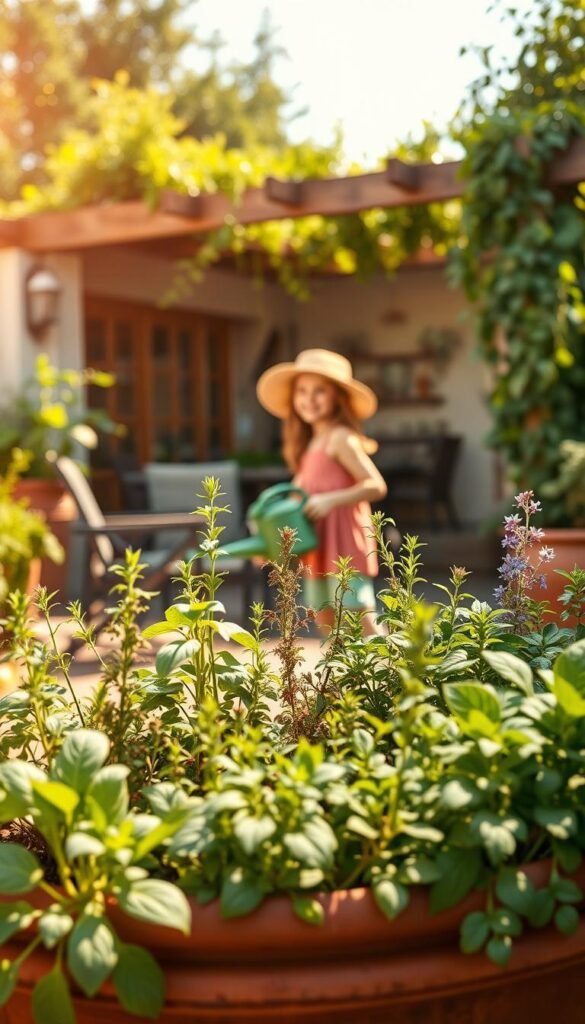
Transform your living spaces into year-round learning labs that grow with the seasons. These adaptable gardening ideas keep children engaged through nature’s cycles while teaching resilience and creativity. Whether planting windowsill herbs or rotating outdoor crops, every project becomes a hands-on science experiment.
Adapting Projects for Seasonal Changes
Match your plants to nature’s calendar for thriving results. Cool-weather champions like spinach and peas flourish in spring’s mild temperatures. When summer arrives, swap them for heat-loving tomatoes and basil that soak up long daylight hours.
| Season | Plant Choices | Care Focus |
|---|---|---|
| Spring | Lettuce, Radishes | Consistent watering |
| Summer | Peppers, Thyme | Morning sunlight |
| Fall | Kale, Carrots | Frost protection |
| Winter | Indoor Basil | Grow light use |
Winter doesn’t mean stopping—relocate to sunny windowsills with compact herb kits. This rotation teaches children how temperature and sunlight affect growth cycles.
Creating a Mini Herb Garden with Kids
Start with quick-sprouting varieties like chives or mint in recycled containers. Let young growers:
- Fill pots with well-draining soil
- Press seeds ¼ inch deep
- Create watering schedules
Herbs offer instant rewards—snip fresh parsley for meals or rub fragrant lemon balm leaves. Pair this with hands-on gardening activities to deepen their connection with nature. Monitor soil moisture together, using finger tests to learn when water is needed.
Designing a Themed Garden: Infusing Nature with Imagination
Unleash mythical realms within your backyard by blending natural elements with childhood fantasies. Themed gardens turn ordinary planters into enchanted worlds where creativity flourishes alongside greenery. These living dioramas teach young minds about ecosystems while celebrating storytelling.
Crafting Fairy or Mermaid Garden Concepts
Transform a shallow dish into a miniature wonderland using pebbles as pathways and moss as magical meadows. Twigs become fairy bridges, while seashells mimic mermaid thrones in coastal themes. Let children arrange tiny cottages or sparkly beads to personalize their vision.
Choose plants that match your theme—baby tears resemble lush fairy lawns, while blue sedum mimics ocean waves. Add variety with colorful succulents shaped like coral or flowering thyme for fragrant pathways. Upcycle old toys as decor to keep costs low and engagement high.
These projects connect young creators to nature through hands-on design. Rotate elements seasonally—swap snow-dusted pinecones for blooming violets. Every change becomes a chance to discuss how real gardens adapt in the natural world.

